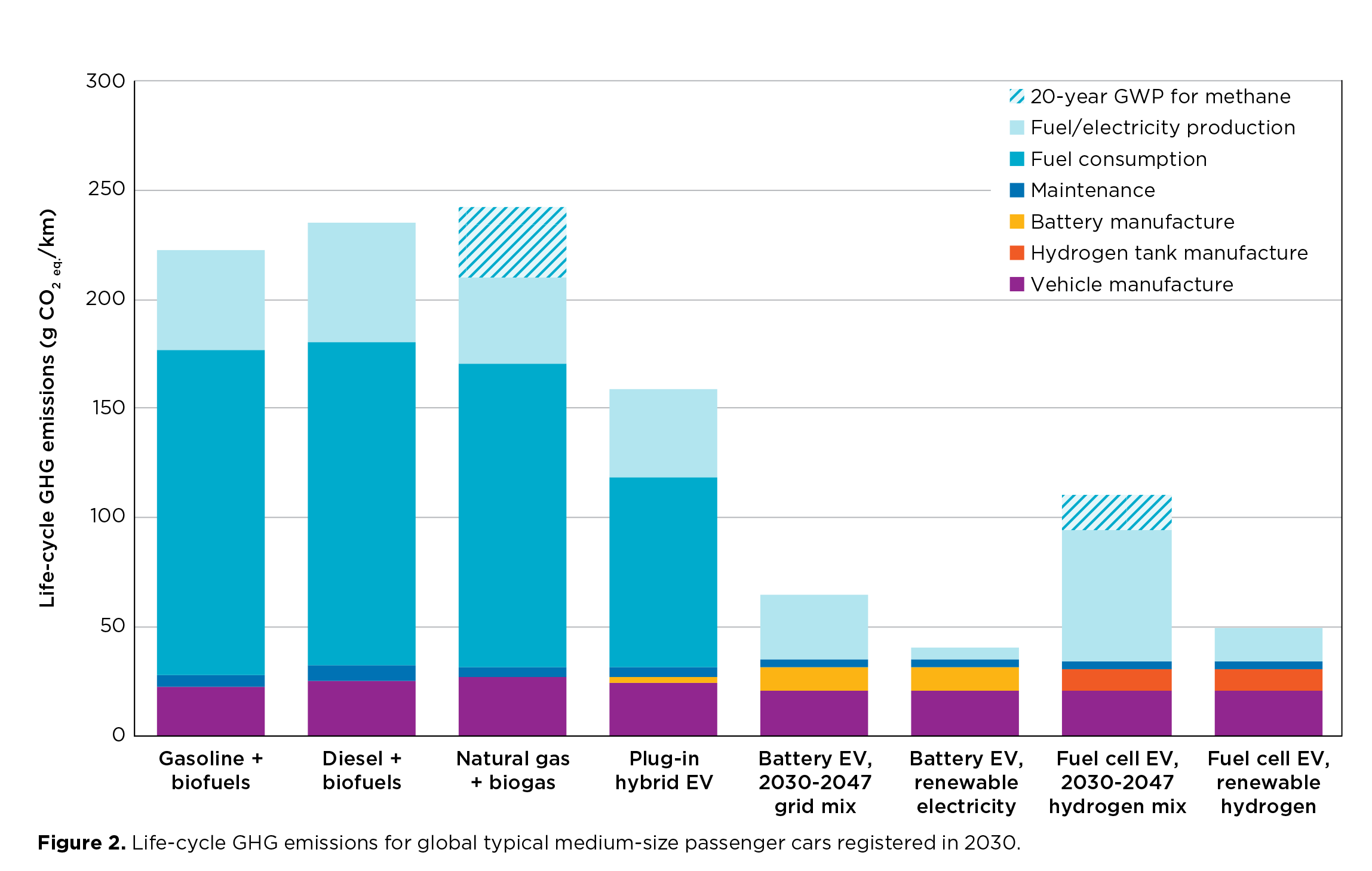ZEVTC publication
Decarbonizing road transport by 2050: Zero-emission pathways for passenger vehicles
The ICCT has conducted a wide-ranging new life-cycle assessment (LCA) of the greenhouse gas (GHG) emissions from a variety of passenger car powertrains and fuels, and this briefing is an overview of the findings and the implications for policymakers seeking to substantially decarbonize road transport by 2050, in line with Paris Agreement objectives. Success will require identifying and supporting the technology pathways capable of delivering deep GHG emissions reductions on a life-cycle basis and understanding the related policy challenge of time.
The LCA shows that only full battery electric vehicles (EVs) and hydrogen fuel-cell EVs have the potential to be very low-GHG pathways (see figure, which shows cars projected to be registered in 2030). The emissions from manufacturing batteries, solar panels, and wind turbines are small when compared to the GHG savings from the greater efficiency and cleaner energy supply of EVs compared to conventional vehicles. Additionally, battery EVs can be expected to operate with progressively fewer upstream emissions over their lifetimes as electricity grids “green,” and the relative benefit of driving EVs compared to gasoline, diesel, and natural gas cars grows over time. As the average useful lifetime of a passenger car is between 15 and 18 years (for trucks and buses, it is often even longer), decarbonization policies will be most impactful if they reflect passenger cars transitioning to all EVs for new sales by the early 2030s, in order to achieve deep decarbonization of the transport sector by 2050.

The study also finds that natural gas does not offer climate benefits compared to gasoline and diesel, and many biofuel pathways do not, either. There is not likely to be sufficient supply of very low-GHG biofuels, biogas, and e-fuels to decarbonize internal combustion engine vehicles, and drivers of plug-in hybrid electric vehicles rely too much on the gasoline engine for this pathway to be a long-term climate solution.
